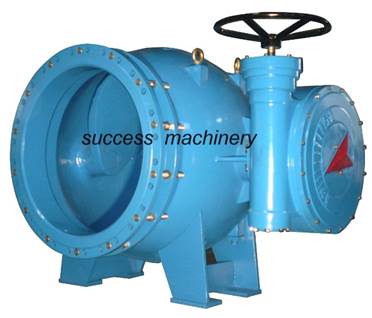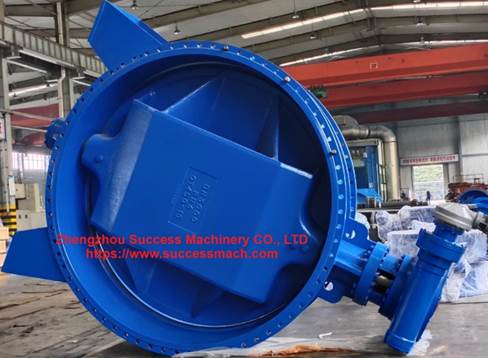Zhengzhou Success Machinery Co.,ltd - Professional valve manufacturer
News Events
How to select valves in dusty conditions
Release time:
Jun 24,2025
From the production and circulation of powdered materials such as cement and lime in the building materials industry, to the transportation and treatment of mineral dust after ore crushing in mining, to the loading, unloading, and storage of grain powder in food processing, dust is everywhere. As a key component for controlling the flow path and start/stop of dust, the proper selection of valves directly determines the safety, efficiency, and stability of the system.
How to select valves in dusty conditions
一、Characteristics of dust medium
1、Physical characteristics: Dust particle sizes exhibit a wide range of distributions, with fine particles as small as PM2.5 reaching several micrometres or even nanometre-scale, while coarse particles can reach hundreds of micrometres. This diversity results in highly complex fluid dynamics behaviour. Fine particles easily disperse with airflow to form suspended aerosols, exhibiting fluidity similar to lightweight fluids; coarse particles tend to settle and accumulate, altering the overall rheological properties of the material and posing a risk of pipeline blockages, particularly in areas with uneven flow rates or changes in pipe diameter.
At the same time, the bulk density of dust varies depending on its composition and compaction degree, ranging from loose, lightweight powder to compact, heavy particles. This affects the material pressure exerted on the valve during opening and closing. Light powder may cause poor sealing, while heavy powder may accelerate wear and tear.
2、Chemical activity: Some dust particles are chemically active. Metal dust particles such as aluminium powder and magnesium powder are prone to oxidation and heat release when exposed to air. They pose a risk of combustion or explosion when exposed to fire sources or high temperatures. Their lower explosive limit is extremely low, and even a small amount of energy can trigger a violent reaction.
Some dust contains corrosive acidic or alkaline components, such as acidic salt powder and alkaline oxide powder produced in the manufacture of chemical raw materials. These corrode the metal materials of valves, gradually weakening their structural strength. The accumulation of corrosion products can also interfere with the normal operation of valves.
3、Electrostatic characteristics: Dust particles easily accumulate charges during flow and friction. The degree of electrostatic charging varies depending on the material of the pipeline and valve inner surfaces. Insulating dust particles have difficulty dissipating charges. When the electrostatic potential difference accumulates to a certain threshold, the resulting spark from instantaneous discharge is sufficient to ignite flammable and explosive dust clouds. In enclosed spaces such as valve chambers, this can form a ‘dust bomb’ with devastating destructive power.
二、Analysis of compatible valve types
1、Ball valve: Known for its unique opening and closing mechanism that uses a rotating ball. Full-bore ball valves have smooth internal flow channels, excellent passage of spherical particles and dust, low pressure loss, and ensure efficient material transport. They perform exceptionally well in dry powder material transport pipelines, such as those used for plastic pellets and glass beads.
Soft-sealed ball valves use sealing materials such as rubber or polytetrafluoroethylene (PTFE), with the ball and seat tightly sealed together to effectively prevent the leakage of fine dust. They are commonly used in pneumatic conveying systems in food and pharmaceutical powder formulation workshops where strict sealing requirements are needed, to prevent cross-contamination of materials. However, frequent operation can cause wear and tear on the sealing components, so it is important to monitor the sealing life and replace them in a timely manner.

2、Butterfly valve: The butterfly plate rotates around an axis to switch on and off. It has a simple and compact structure, takes up little space, and is lightweight. Its advantages are particularly evident in large-diameter dust pipelines, offering outstanding cost-effectiveness. The bidirectional sealing butterfly valve, with its specially designed sealing structure, provides good sealing regardless of the direction of airflow and is suitable for ventilation and dust removal networks, allowing for flexible switching of airflow direction.
Elastic seal butterfly valves rely on the elasticity of rubber to compensate for deviations between the valve plate and valve seat, and are resistant to a certain degree of particle wear. They are commonly used in pneumatic ash removal systems to handle moderately abrasive dust such as fly ash, but their sealing stability is poor under high pressure differentials.

3、Knife gate valve: The knife gate cuts straight into the material flow, similar to the action of a guillotine. It has a large diameter and can accommodate dusty materials containing large particles, making it suitable for applications such as dry powder tailings in mines and the transportation of construction sand and gravel powder. Hard-sealed knife gate valves feature valve plates and seats that have undergone hardening treatment, enhancing their wear resistance. In high-temperature environments such as cement plant kiln tail flue ash discharge pipelines, they maintain their sealing integrity even when exposed to high-temperature clinker dust erosion. However, when closed, material residues on the sealing surface are difficult to clean, and long-term accumulation can impair sealing performance.

4、Rotary valve (star discharge valve): With a unique rotor structure and multiple blades rotating in separate compartments, this valve ensures precise and accurate discharge. It is widely used for bottom discharge in powder silos, enabling continuous and uniform material supply, such as in flour mills where raw material silos feed raw materials to production lines in precise quantities; Internal labyrinth-type seals or elastic seals are designed to reduce dust leakage. Combined with airtight bearings, they prevent external air from flowing back into the system during negative pressure pneumatic conveying and dust collection, maintaining stable system pressure. However, the rotational speed should not be too high to avoid accelerated dust impact wear and motor overload.

三、Key Considerations for Selection
The main material is selected based on the corrosiveness of the dust. 304 stainless steel is resistant to general acid and alkali dust, while 316L stainless steel is suitable for highly corrosive environments containing chloride ions, and is commonly used in chemical and electroplating industries. Carbon steel is treated with galvanisation and powder coating to enhance its wear resistance and rust prevention capabilities, making it suitable for non-corrosive dust environments in construction and mining.
Sealing materials: Nitrile rubber is oil-resistant and wear-resistant, stable when exposed to oil-containing mineral dust; fluororubber is resistant to chemical corrosion and reliable in highly corrosive chemical dust environments. Silicone rubber is heat-resistant and used in high-temperature kiln flue dust collection valves. Valve cores and plates are made of wear-resistant alloys, with tungsten carbide coatings to extend service life and ceramic coatings to resist scratches from hard particles. Valves at cement plant raw material mills use coatings that significantly reduce wear.
keywords
Previous Page:
Previous Page:

Follow Us
Zhengzhou Success Machinery Co.,ltd
TEL:+8618595868771
E-mail:sales@successmach.com
Address:98-1 Dengfeng Road, Shangjie District, Zhengzhou City, Henan Province

